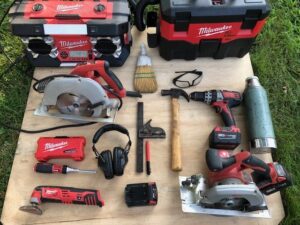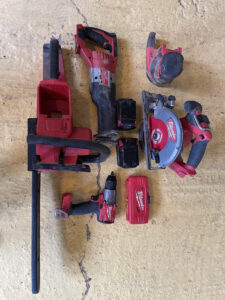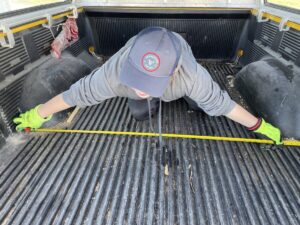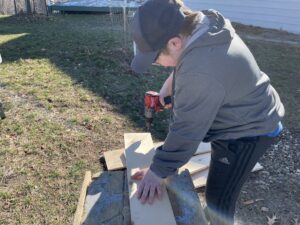A rarely used handy tool made our lives easier after we found a box on our porch. It contained a remote weather station our two grown children chipped in to buy it for us.
Many parts needed to be assembled. That would have been difficult had we not been “tool proactive”. The weather station had a small door that covered a battery compartment. Opening it required using a tiny mini screwdriver.
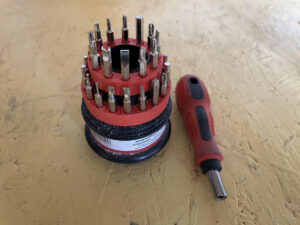
Screwdriver set with mini-bit-heads.
Rich occasionally buys somewhat unusual tools to help with special household or yard needs. One was a lifesaver for putting together the weather station. It was a mini screwdriver kit with about 20-bit heads made for jobs too small for normal tools. It helped us easily and quickly assemble the weather station.
How We Organize Tools at Winding Pathways
House Tools. Easy to Grab
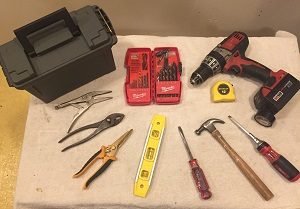
We find Milwaukee Tools, Stanley, and Vice Grips three excellent brands to have around.
We keep a toolbox in the house for quick needs. It includes Phillips and slot screwdrivers, pliers, Marion’s mother’s mini hammer, an adjustable wrench, measuring tape, a small “torpedo” level, a scraper, and a short coil of wire. The house toolbox is close at hand and enables us to fix most problems inside the house.
More Serious Diverse Tools.
Rich keeps major project tools on a pegboard in our cabin. These include hammers, squares, hand saws, many types of screwdrivers and pliers, files, chisels, hearing protectors, and clamps. On a nearby shelf is a toolbox holding rarely used tools. They’re specialty ones used when encountering unusual fixit or carpentry needs. These include odd drill bit sizes, unusually shaped files, contour gauges, and even a set of carving tools. Although not often used, once in a while they make life easy when a project has an odd need.
Battery Powered Power Tools
Although muscle-powered tools are perfect for small jobs, power tools make many projects shorter and easier. Rich keeps a drill, driver, jigsaw, circular saw, and sanders in a cabin cabinet. Over several years, battery-powered, or cordless, tools have come on the market. They are gradually replacing corded counterparts. Several companies make them, and each has its own battery system. It’s best to stay with one brand, so all tools operate on the same style battery. Rich began building his tool system with the Milwaukee brand years ago and occasionally buys a new power tool to add to the system. His Milwaukee batteries power carpentry tools as well as trimmers and chainsaws for outside use.
- We switched to cordless tools gradually.
- Stick with one brand of tools.
Tool Tips
- Buy quality tools. There’s a lot of junk on the market. Quality tools of any configuration are easier to use and last longer than cheap ones.
- Frequent garage sales. Years ago, most screwdrivers, wrenches, pliers, chisels, and clamps were high quality and made in the United States. These muscle-powered tools don’t go obsolete and often can be purchased for just a buck or two, even if they’re 40 or 50 years old. In contrast, many power tools sold at garage sales are equally old and inexpensive but often are much less effective than newer counterparts. Most are corded. They may be fine for occasional jobs but buying newer power tools is usually worth the money.
-
- One way to measure a truck bed.
- Learning to safely use tools.
Summary
Fixing and building items around the house can be a chore or a source of satisfying pride. Often, it’s impossible to find someone to hire for small fixit jobs, and hiring anyone to do a project is costly. Doing it yourself brings cost savings and satisfaction. Don’t know how? Check your friend, YouTube. Chances are good there are many posts showing how to fix or build it.

